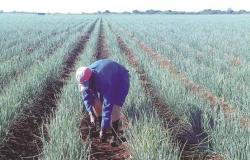
Thursday, June 13, 2024, 12:06
The incorporation of crushed olive pits in mortar bricks improves its properties as a thermal insulator and revalues this byproduct of the oil industry. Alejandro San Vicente Navarro has demonstrated its energetic, economic and social viability, as well as its environmental sustainability, in the thesis with which he obtained the doctorate in Mechanical Engineering from the University of La Rioja.
Developed in the Department of Mechanical Engineering – within the framework of the 881D Doctorate in Innovation in Product Engineering and Industrial Processes program (Royal Decree 99/2011) – the thesis entitled ‘Methodology for the evaluation of sustainability in mortar bricks doped with crushed olive pit’, has been directed by Javier Ferreiro Cabello and Esteban Fraile García; and has obtained the qualification of outstanding cum laude.
A balanced ‘doping’
Crushing the olive to produce oil generates a remainder of crushed stone, a by-product that is used as fuel in biomass boilers. This research studies its use in the manufacture of construction materials based on cement, such as GERO (perforated) mortar bricks.
“By ‘doping’ the bricks with crushed stone, they lose certain mechanical resistance, but their thermal insulation capacity increases, minimizing heat transmission,” explains Alejandro San Vicente. “A balance is sought that makes them optimal for the construction of new buildings in Spain.”
To find this balance, tests have been carried out with bricks ‘doped’ between 5% and 30% (in volume of replacement of aggregate with crushed olive stone), since from this proportion the required resistance properties are lost. in construction. The best overall results have been obtained with percentages of between 5 and 15%.
Sustainable construction
This research is framed in the concept of ‘sustainable construction’, which seeks to address three fundamental pillars from the point of view of engineering and sustainability: technical, energy, economic and social feasibility; environmental conservation, and resource reuse.
The bricks manufactured in this way increase their insulating capacity, which will reduce the heating and air conditioning consumption of the homes built with them. Thus, although the initial cost is higher, it is estimated that in a period of between 11 to 40 years (depending on the percentage of crushing) the initial investment is amortized with savings on energy supply bills.
In addition to its technical and economic feasibility, the life cycle analysis demonstrates the long-term reduction of CO2 emissions in homes built with this type of brick, especially those that use energy sources dependent on electricity (aerothermal energy, electric heating , air conditioning, etc.).
«Environmentally, the use and recycling of this waste from the olive industry contributes to the objectives of the circular economy, reducing the negative impact of human activity on the environment. And it is also justified socially by the generation of a small associated industry and proximity to the olive growing centers,” says the doctor.
Throughout the research, Alejandro San Vicente has published three scientific articles: ‘Thermal behavior of hollow concrete blocks and bricks doped with rubber from waste tires’, in the magazine Construction and Building Materials; ‘Alternative use of ground olive pit waste in doped mortar bricks for sustainable facades’, in Buildings magazine, and ‘Methodology for evaluating the sustainability of the use of ground olive pit in mortar bricks for facades’, in the journal Applied Sciences.
€2/month for 4 months
Are you already a subscriber? Log in





